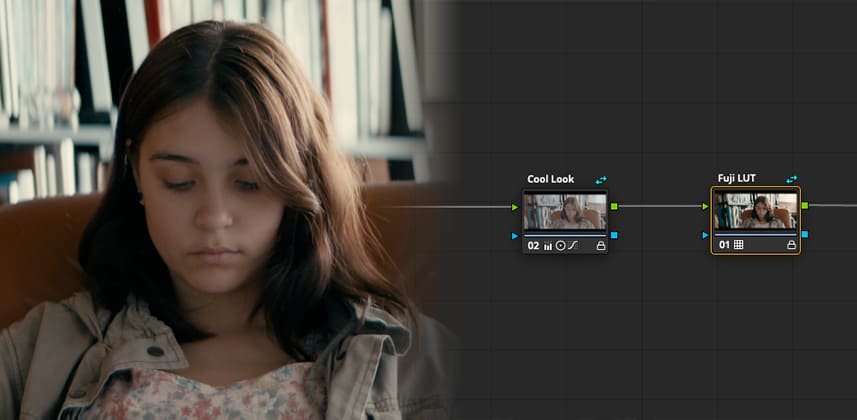| Series |
|---|
Part 1: Combining Shared Nodes and Groups to improve flexibility, efficiency, & consistency
I get a lot of questions about shared nodes. For new colorists, or those new to Resolve, its a tricky topic that requires some explanation. But shared nodes are incredibly powerful, especially when combined with the other organizational tools we have in Resolve.
In this two-part Insight series, I look specifically at using Shared Nodes in conjunction with Group Grades. It’s a powerful technique that adds an additional dimension, allowing us to apply grading operations across multiple groups while maintaining a single point for revision of our Group grades. While most colorists treat Shared nodes and Groups as an either/or approach, combining both allows us to make quick changes and revisions to multiple groups simultaneously while maintaining their individual group grades.
This combined approach is a great way to apply things like Color Space Transforms, ACES Transforms, LUTs, & looks. BUT – it helps to have a plan of action when you start combining these tools. That’s what this series is all about.
Techniques Covered
- Creating shared nodes
- Using groups
- Saving pre- and post-group stills
- Applying shared nodes across multiple groups
- Color Space Transforms
- Film emulation LUTs
Footage
- Blackmagic Pocket Cinema Camera 6K Footage courtesy of Blackmagic Design
Related Insights
- The Fundamentals of Resolve’s Gallery and Memories – This includes an in-depth explanation of how Resolve saves off stills when using Group and Timeline node graphs.
- Revisiting Resolve Grouping: Using Post-Clip As A Timeline Level Grading Alternative – An in-depth exploration of the general concept of Groups on the DaVinci Resolve color page.
- Three Strategies for Increasing Color Separation – This Insight by Cullen Kelly is referenced as providing inspiration for the RGB Mixer technique used to achieve color separation (as mentioned in the Comments).
Comments and Questions?
Leave them below!
– Peder
Member Content
Sorry... the rest of this content is for members only. You'll need to login or Join Now to continue (we hope you do!).
Need more information about our memberships? Click to learn more.
Membership optionsMember Login


